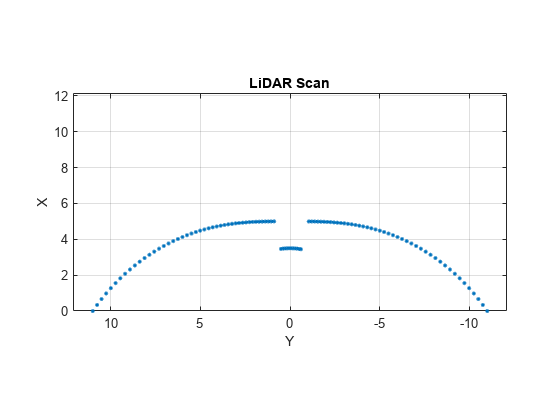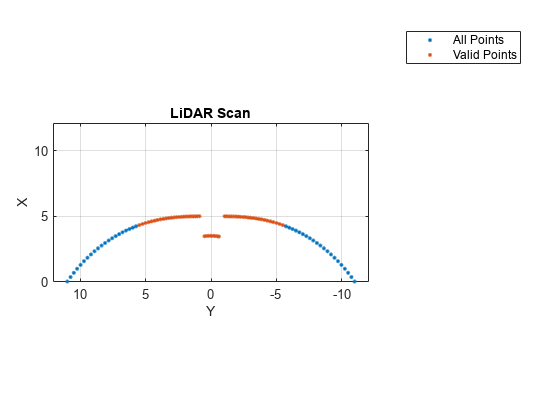lidarScan
Create object for storing 2-D lidar scan
Description
A lidarScan object contains data for a single 2-D lidar
(light detection and ranging) scan. The lidar scan is a laser scan for a 2-D plane with
distances (Ranges) measured from the sensor to obstacles in the
environment at specific angles (Angles). Use this laser scan object
as an input to other robotics algorithms such as matchScans (Navigation Toolbox), controllerVFH (Navigation Toolbox), or monteCarloLocalization (Navigation Toolbox).
Creation
Description
scan = lidarScan(ranges,angles)lidarScan object from the
ranges and angles, that
represent the data collected from a lidar sensor. The
ranges and angles inputs are
vectors of the same length and are set directly to the
Ranges and Angles
properties.
scan = lidarScan(cart)lidarScan object using the input Cartesian
coordinates as an n-by-2 matrix. The
Cartesian property is set directly from this
input.
scan = lidarScan(scanMsg)lidarScan object from a LaserScan (ROS Toolbox) ROS message object.
Properties
Object Functions
plot | Display laser or lidar scan readings |
removeInvalidData | Remove invalid range and angle data |
transformScan | Transform laser scan based on relative pose |
Examples
Extended Capabilities
Version History
Introduced in R2019b

